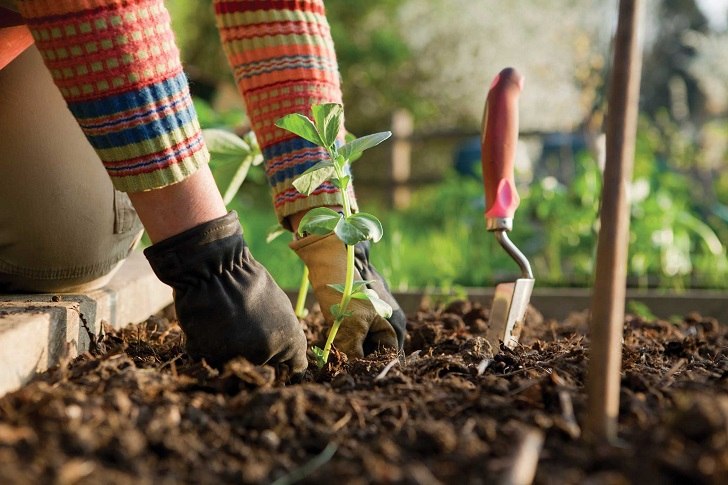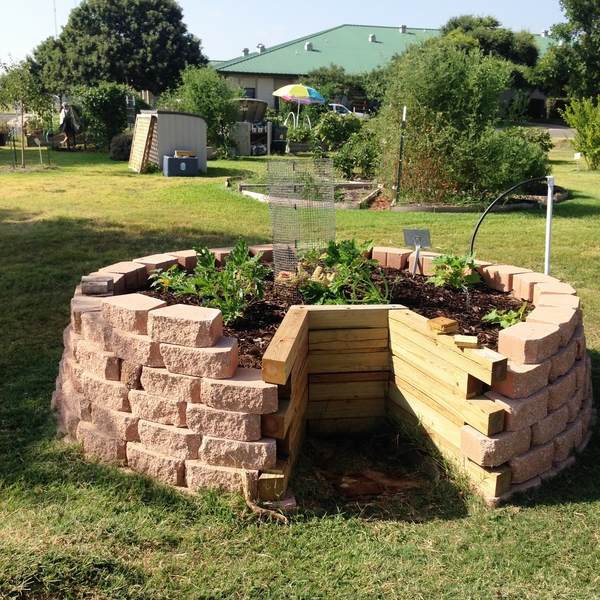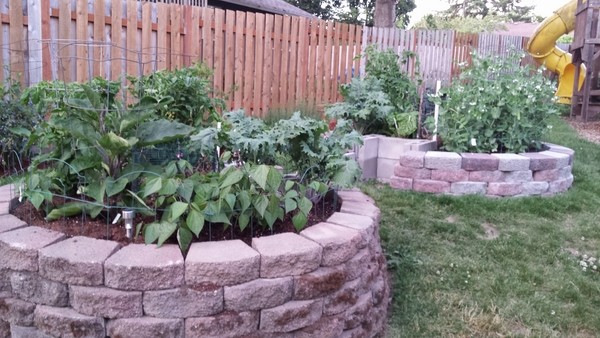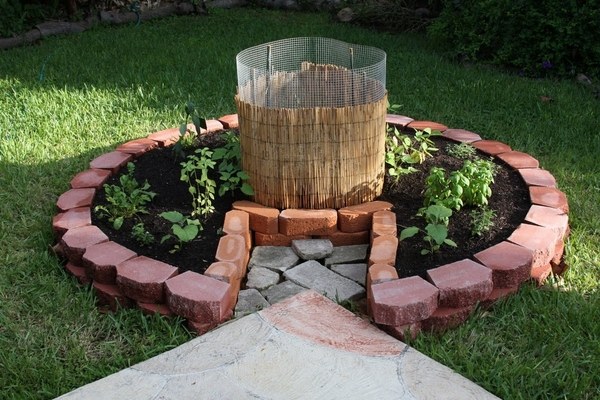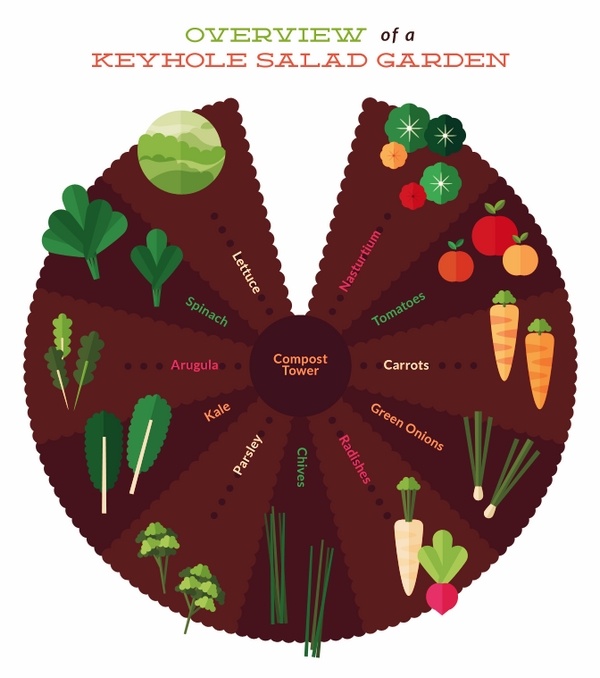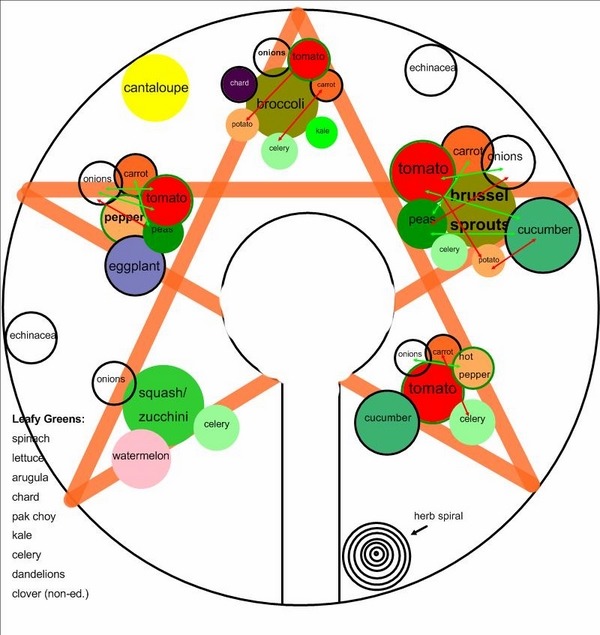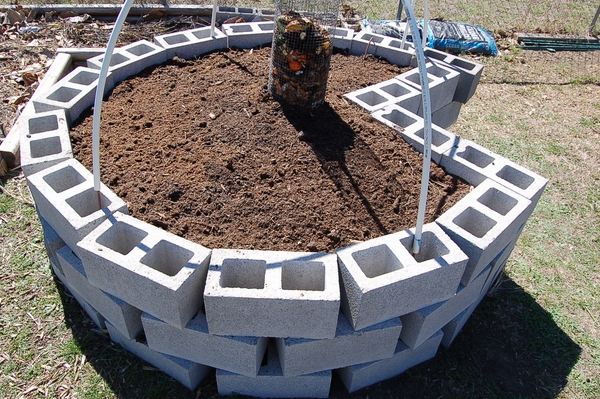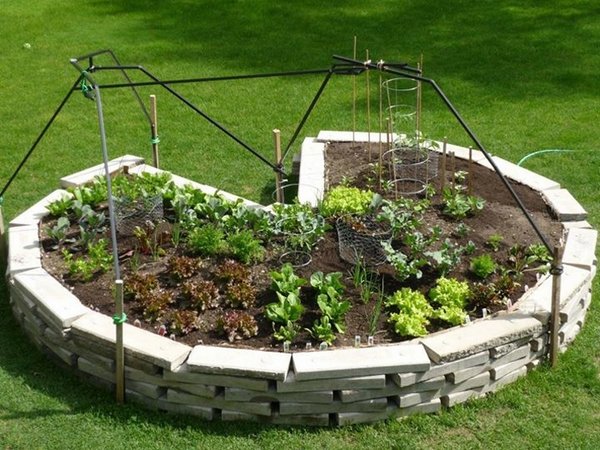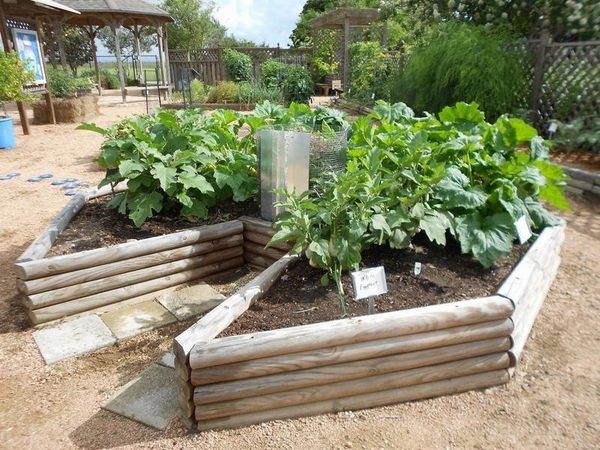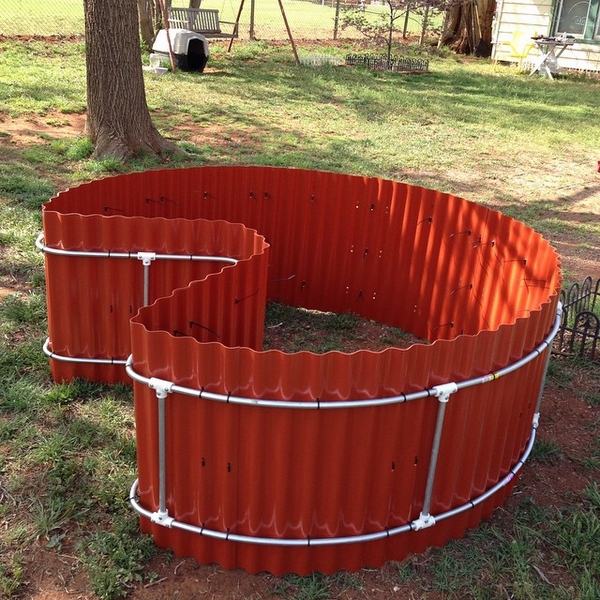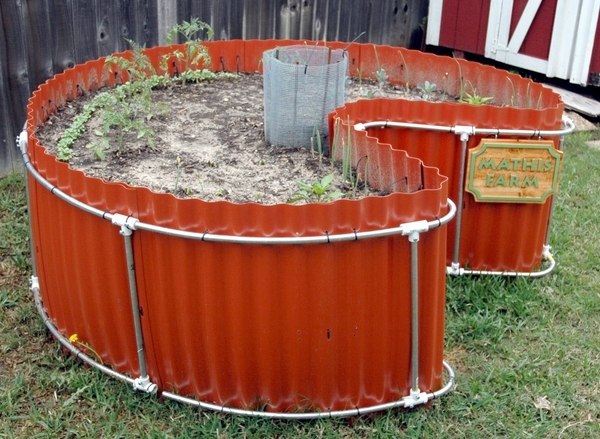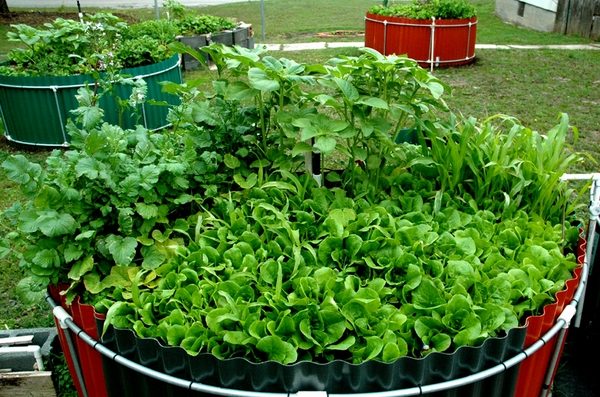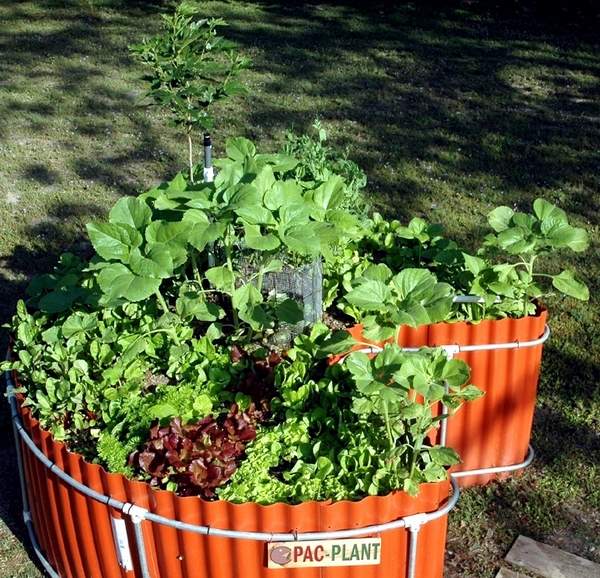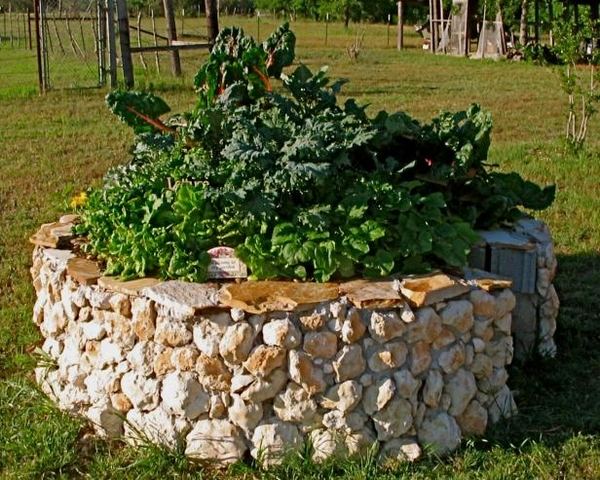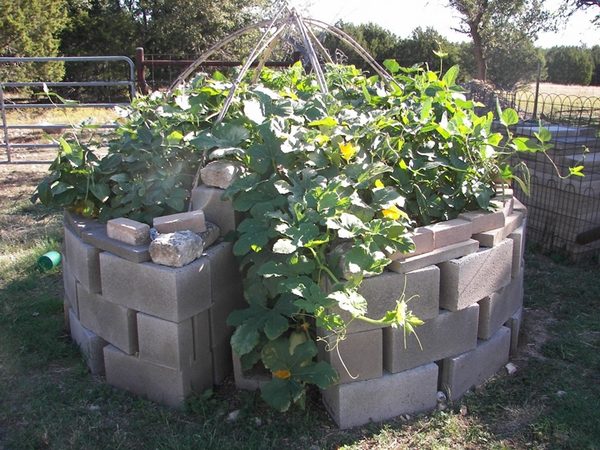What is a keyhole garden? It is a planting method which originated in Africa and became popular in areas with dry and hot climate as it proved quite efficient. How to design a keyhole garden? What are their advantages ? What to plant and how to arrange the plants? We have selected some examples to make it easy for you to build your own thriving oasis.
Keyhole garden designs are quite similar to the raised garden beds which many people are familiar with. This style of gardening is very convenient for those who like to engage in the activity, but are not ready to experience back pain. The origin of the “keyhole” structure lies in Africa where the climate requires the most efficient use of water resources. For Africa and other regions with a hot climate the “keyhole” is what you need and you can grow enough food to feed a small family.
How a keyhole garden works?
The name “keyhole” is not accidental. If looked from the above, the shape of the garden resembles a classic keyhole where a basket for compost is in the center and a notch is cut into the bed for easy access to the center compost well (basket). Compost materials can be added easily to the basket sitting in the center to provide nutrients for the plants.
The usual size of such a garden does not exceed 2-2.5 meters in diameter and about 1 m. above the ground and the wall are usually made of stone which secures the shape and aids holding the moisture. In Africa the keyhole garden is positioned next to the kitchen and the typical plants that are grown are leafy greens – lettuce, kale, spinach, herbs as well as some root crops – onions, garlic, carrots, and beets. The plants are placed closely so that the soil and moisture are utilized and people get maximum production.
What are the benefits of a keyhole garden?
Before engaging yourself in keyhole gardening, you should know its advantages and how to maintain and care for your space.
The enrichment of soil is one of the major advantages as the organic materials decompose over time thus nourishing the soil and plants. The regular filing of materials to the central basket replenishes the soil.
Minimal water requirements is a huge advantage of the African keyhole garden as the layers soak up moisture and the soil requires less water to moist the plants.
Keyhole gardens require less labor as the shape makes access easier and principle of cultivating based on soil re-nourishment and moisture retention reduce the amount of time needed to maintain the place.
The low cost of materials for constructing a keyhole garden is another advantage. Besides the seeds for planting that you may need to buy, such a structure can be constructed from available materials.
Maintenance of the keyhole garden – useful tips for beginners
African keyhole gardens are a good option for beginners as you can practice and develop your knowledge for plants and enjoy the results of your hobby without spending hours around the vegetable beds. When you plan the design of your keyhole garden you have to consider the major elements and the maintenance needed. Soil nutrients, pest management, location and space would be the main considerations.
The top soil layer and dry manure need to be replenished to keep the fertility. You should use clean water on top soil and water from washing dishes or hands must be poured in the compost basket. What substances can you put in the basket? Any vegetable scraps which are uncooked, eggshells, dry manure, etc. It will take 2-3 days for the basket to decompose and you can replace it or add materials.
Due to the limited amount of soil, it may get exhausted and the vegetables may not grow as well. This means you will need to rebuild the structure, but usually such a process takes between 4-5 years.
What plants are suitable to grow in a keyhole garden?
Choosing the right plants for a keyhole garden and planting them in the right way will give you a satisfactory result. Combining different kinds of plants in a same bed can be done in different ways, but the general idea is to plant leafy crops next to root vegetables. It is advisable to plant taller items at the center of the lock and the lower-growing ones at the front. Experts advise that a minimum of four vegetable plants is required to guarantee that your plot is going to be fertile and resistant to pests.
Leafy plants that a suitable for keyhole gardens are – spinach, lettuce, mustard spinach, Swiss chard, kale, arugula, herbs like parsley, chives, etc. The root vegetables that are suitable for growing are carrot, onion, beetroot, radishes, turnips, garlic, etc. Experienced gardeners advise not to plant crops like tomatoes, cabbage, peppers, eggplant, potatoes, squash, maize, peas as they require good irrigation and will not grow as you may expect in a keyhole garden.
How to build a keyhole garden?
As a DIY project, building a keyhole garden can be done quite easily. The steps to follow are simple and you do not need any special skills to manage such a project.
Step 1 – Clear a circle of about 2-2.5 m. mark the outline of the garden with stones. Secure four corner posts into the ground in the center which will be the place of the compost basket. Encircle the posts with ropes and thatching grass to allow water from the basket flow into the area.
Step 2 – Arrange the first level of the garden. You can use broken clay pots, aloe leaves, iron scraps such as empty food and beverage cans. Those will provide drainage if heavy rain happens and will add minerals to the soil. Add layers of soil and make sure that each layer slopes downwards from the center. Add stones to reach the desired height and fill with soil.
Step 3 – plant your seeds.
See the amazing border edging ideas

